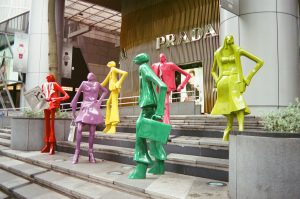The Hidden Psychology Behind Why We Buy Things We Don’t Need
Have you ever found yourself standing in line at the checkout counter with a handful of items that you didn’t intend to buy? Perhaps it was a pack of gum, or a magazine you saw while waiting. Or maybe it’s something larger, like a new gadget or piece of clothing that caught your eye and somehow ended up in your shopping cart. We’ve all been there at some point, wondering why we just spent money on something we don’t really need. The answer lies in the hidden psychology behind our purchasing habits, and understanding it can help us make more intentional and mindful decisions when it comes to our spending. Let’s dive in to explore the hidden forces that influence why we buy things we don’t need.
The Power of Advertising and Marketing
One of the main reasons we often find ourselves buying things we don’t need is the power of advertising and marketing. Companies spend billions of dollars each year to create ads that appeal to our emotions and persuade us to buy their products. They carefully craft messages that target our desires and insecurities, using a mix of visuals, music, and messaging to make their products seem like the answer to all of our problems.
For example, a car commercial might show a happy family driving through scenic roads in a brand new vehicle, creating the illusion that buying that car will bring us the same joy and happiness. Fashion brands use beautiful and stylish models to convey the message that buying their clothing will enhance our appearance and make us more attractive. These subtle cues and messages can have a strong influence on our desires, making us feel like we need a product even if we didn’t think we needed it before.
The Illusion of Scarcity
Another tactic that companies use to convince us to buy things we don’t need is the illusion of scarcity. Limited time offers, limited edition products, and phrases like “only 5 left in stock” all create a sense of urgency and scarcity that makes us feel like we need to act fast or miss out on something valuable. It’s a powerful marketing strategy because it taps into our fear of missing out and our instinct to grab onto something before it’s gone.
This tactic is often used in sales promotions and can make us feel like we’re getting a great deal, even if we didn’t plan on buying that item in the first place. But in reality, many of these products are not actually limited edition or about to run out of stock. It’s just a sneaky way to push us to make a purchase without thinking it through.
The Influence of Social Pressure
Another hidden force that influences why we buy things we don’t need is the pressure of social norms and expectations. We are constantly bombarded with images and messages on social media and in our day-to-day interactions that suggest we need to have certain things in order to be successful or fit in with society. This can create a sense of social pressure to keep up with the latest trends and have the newest and best things, even if we don’t actually need them.
For example, if our friends are all getting the latest iPhone, we may feel like we need to get it too in order to fit in and be part of the group. Or if our peers are buying designer clothes and handbags, we may feel like we need to do the same to be seen as fashionable and successful. This type of social pressure can be subtle but powerful, driving us to make purchases that we wouldn’t make if we were not influenced by external forces.
The Role of Emotional Spending
Beyond the external factors that influence our spending, there is also a psychological aspect at play. Many people engage in emotional spending, using shopping as a way to cope with difficult emotions or to fill a void in their lives. When we are feeling stressed, anxious, lonely, or bored, we may turn to shopping as a way to temporarily make ourselves feel better. The rush we get from buying something new can give us a brief sense of pleasure and satisfaction, but it often fades quickly, leaving us feeling empty and regretful.
It’s important to recognize when we are using shopping as a coping mechanism and address the underlying issues that drive us to overspend. Instead of turning to material possessions for temporary happiness, we can find healthier ways to manage our emotions and fill our lives with meaningful experiences and connections.
The Power of Mindful Spending
With all of these hidden forces at play, it can feel like resisting the urge to buy things we don’t need is an uphill battle. But there is hope. By becoming aware of these influences and understanding our own spending habits, we can make more mindful and intentional choices when it comes to our purchases. We can ask ourselves questions like “Do I really need this?” and “Will this item truly bring value to my life?” before making a purchase. We can also practice delaying gratification and give ourselves time to think about a purchase instead of acting on impulse.
In conclusion, the hidden psychology behind why we buy things we don’t need is a complex and multifaceted phenomenon. From the powerful influence of advertising and marketing to the pressure of social expectations and emotional coping mechanisms, there are many factors at play that contribute to our spending habits. By understanding these hidden forces and practicing mindful spending, we can break free from the cycle of unnecessary purchases and make choices that align with our values and goals.










